The Historical Evolution of the Water Wave Pattern in 汉服
The Intricate Water Wave Pattern in Hanfu
The water wave pattern, a hallmark of Hanfu, the traditional clothing of the Han Chinese, holds a rich history steeped in cultural significance. Its origins can be traced back to the ancient Chinese belief in the harmony between humans and nature, particularly the reverence for water as a life-giving force.
Origins in the Han Dynasty
During the Han dynasty (206 BCE – 220 CE), the water wave pattern emerged as a symbol of auspiciousness and prosperity. Water was believed to bring good fortune, abundance, and fertility, and these ideas were reflected in Hanfu designs, where the water wave pattern adorned robes, skirts, and accessories. It was a symbol of hope for wealth and a harmonious life, deeply rooted in the daily lives of the people.
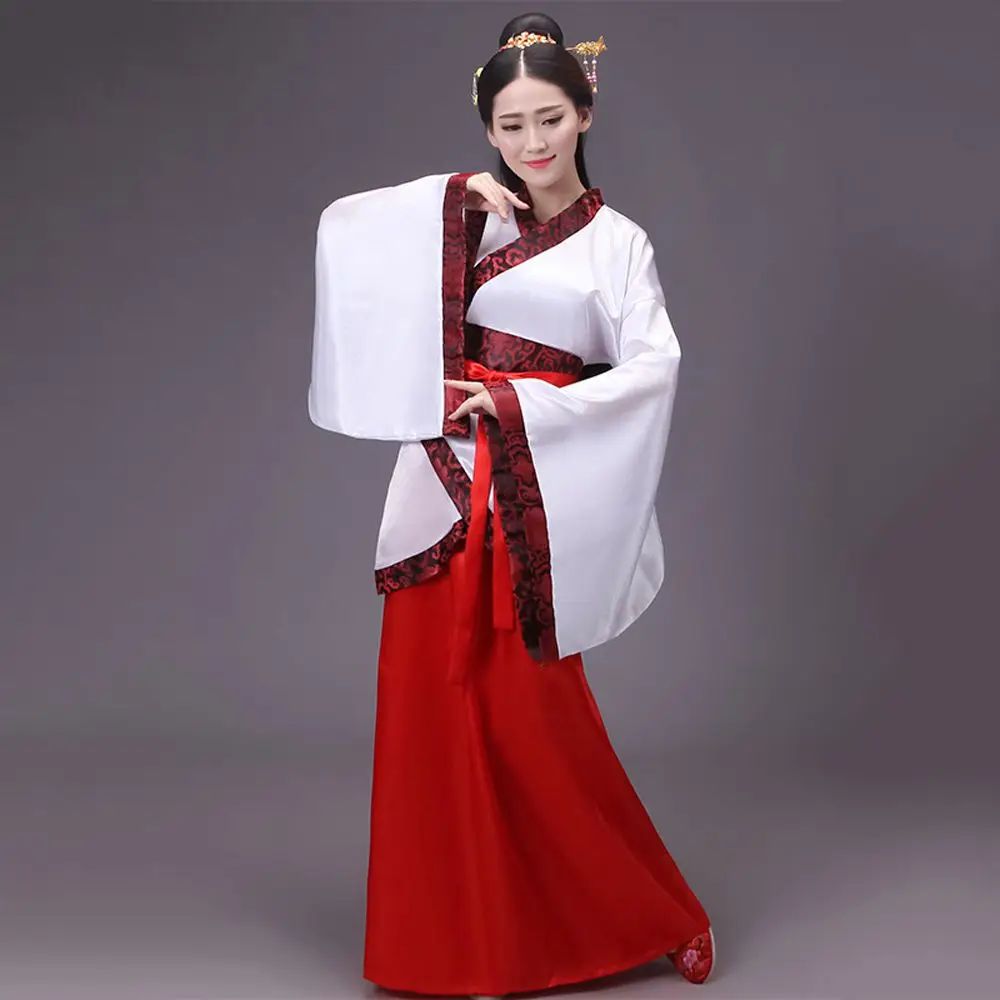
Symbolism in the Tang Dynasty
As Hanfu evolved through the centuries, the water wave pattern continued to hold cultural significance. During the Tang dynasty (618 – 907 CE), it became a symbol of elegance and refinement. The pattern was often incorporated into the elaborate and flowing garments worn by the Tang court, representing the grandeur and cultural sophistication of the era. Water’s fluidity was seen as embodying the gracefulness of the elite, while also conveying a sense of power and serenity.
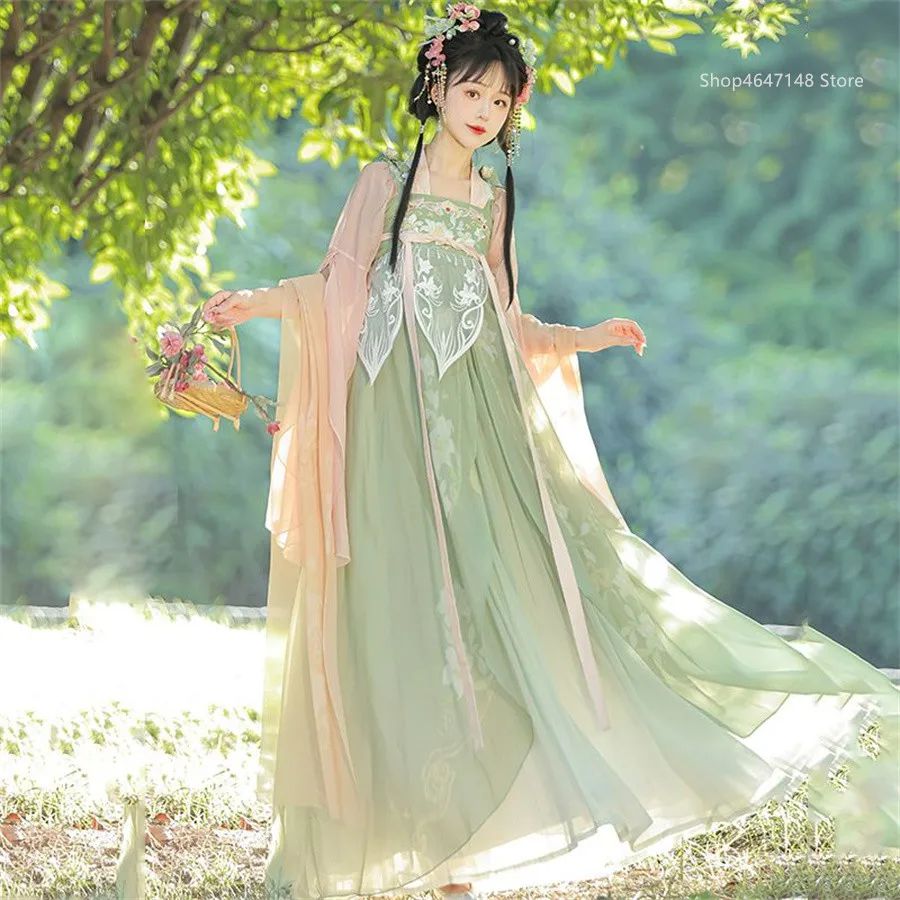
Evolution in the Song 和 Ming Dynasties
In the Song dynasty (960 – 1279 CE), the water wave pattern took on a more naturalistic form. Artisans depicted the pattern with subtle variations in color and texture to reflect the movement and fluidity of water, capturing its dynamic essence. This naturalistic approach continued into the Ming dynasty (1368 – 1644 CE), where the water wave pattern became a symbol of tranquility and harmony, balancing the vibrant energy of the Tang with a newfound focus on inner peace and balance in both life and nature.
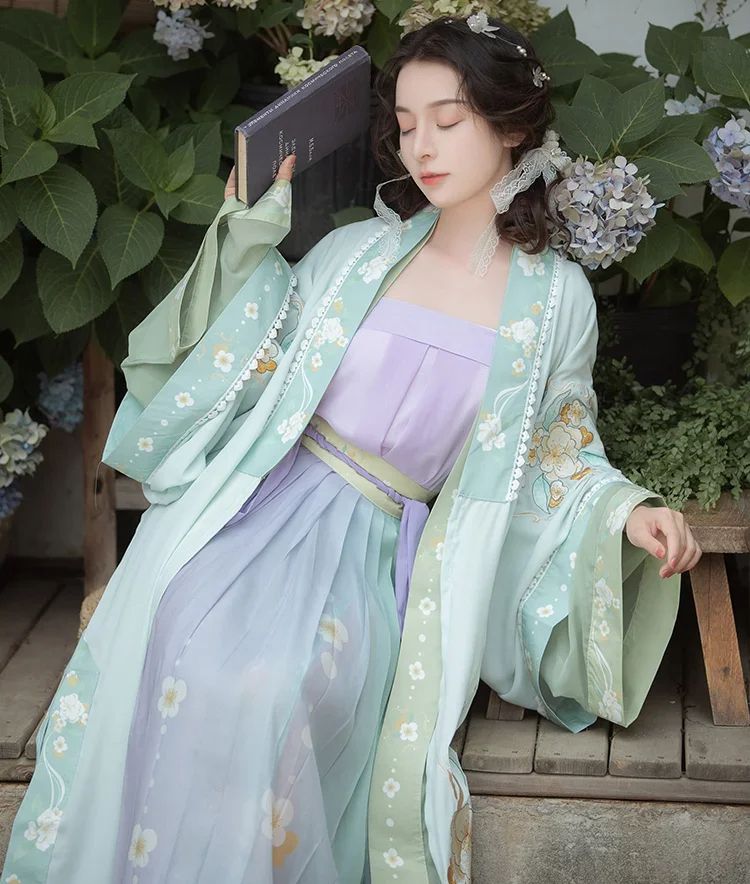

Influence of the Qing Dynasty
The Qing dynasty (1644 – 1912 CE) marked a period of cultural exchange between China and the West. During this time, the water wave pattern in Hanfu was influenced by European textile designs, resulting in a more stylized and geometric interpretation. The water wave pattern was often paired with other motifs like clouds, flowers, and mythical creatures, blending traditional Chinese aesthetics with foreign elements. This period saw a transformation of the water wave pattern into a more intricate and ornate design, symbolizing the merging of cultures while still retaining its roots in Chinese tradition.
20th Century Revival and 现代 Interpretation
In the 20th century, the water wave pattern experienced a revival as part of the Hanfu revival movement, which aimed to restore traditional Chinese clothing and culture. Contemporary designers began to reinterpret the water wave pattern, incorporating it into modern fashion and accessories. The design is no longer limited to traditional Hanfu but can be found in various forms, from modern dresses to jewelry, symbolizing Chinese cultural heritage and national identity. The water wave pattern today has become a symbol of both tradition and modernity, reflecting the enduring influence of Chinese aesthetics on global fashion.
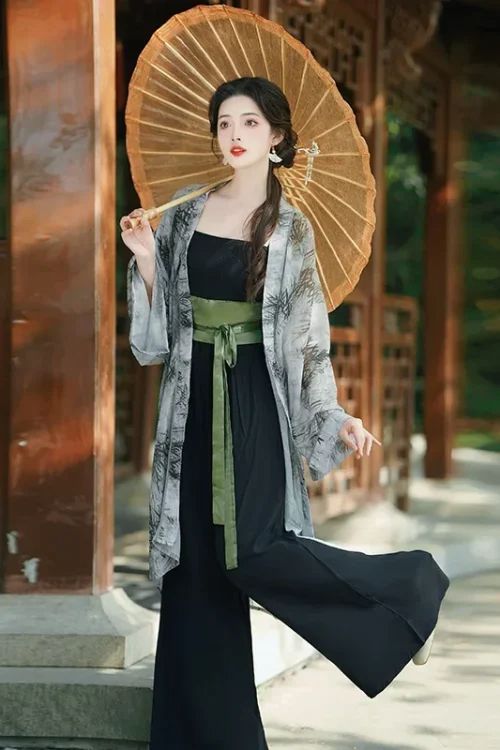
Enduring Legacy of the Water Wave Pattern
Today, the water wave pattern continues to adorn Hanfu, serving as a reminder of the rich history and cultural significance of this traditional Chinese garment. Its fluid lines and intricate designs symbolize auspiciousness, prosperity, elegance, and the harmonious relationship between humans and nature. As a versatile and meaningful design element, the water wave pattern has not only survived centuries of evolution but has also found a place in modern fashion, bridging the past and present with its timeless beauty.The Cultural Significance of Water Wave Patterns in Hanfu
The water wave pattern, known as “shuimo” in Chinese, holds profound cultural and philosophical meaning in traditional Hanfu. Its symbolic association with water represents life, fluidity, and balance. In Chinese cosmology, water is viewed as one of the five essential elements that shape the universe and human existence. It embodies both the yin and yang forces — yin being feminine, passive, and yielding, while yang is masculine, active, and assertive.
Water in Chinese Cosmology and Philosophy
In Chinese cosmology, water symbolizes the primordial chaos from which all life emerged. The water wave pattern reflects the fluidity and transformative nature of the universe, representing the constant cycle of birth, growth, decay, and renewal. In this way, the water wave motif mirrors the ebb and flow of life, symbolizing both the dynamic and ever-changing world and the harmony between humans and nature.
Water, being essential for life, has always played a crucial role in Chinese history. The water wave pattern serves as a visual reminder of this relationship, reflecting the traditional reverence for water as a vital, life-giving force. In addition to its natural symbolism, the pattern also reflects the importance of water in agriculture and prosperity, crucial for ancient Chinese societies that depended heavily on agriculture.

Yin and Yang Balance in Water Wave Patterns
The water wave pattern is not only an artistic symbol but also a visual representation of the philosophical concept of yin and yang, the dual forces that make up the universe. The undulating lines of the water waves illustrate the balance between these opposing forces. The softness of the water represents the yin aspect, which is associated with femininity, calmness, and yielding. Meanwhile, the movement and force of water embody the yang aspect, linked to masculinity, strength, and assertiveness. Together, the intertwining lines of the water waves represent the interconnectedness of these forces, which are essential to maintaining balance and harmony in life.
Use of Water Wave Patterns in Hanfu Design
In Hanfu, the water wave pattern is often used to embellish various elements of the garment, including sleeves, skirts, and robes. The pattern can be embroidered, woven, or printed onto fabric, adding both elegance and symbolic depth. The size, shape, and color of the pattern vary depending on factors such as the region, dynasty, and the wearer’s social status. For example, during certain dynasties, the pattern might be more elaborate for members of the imperial court or officials, while simpler designs might be used for common people.
Popularity During the Tang Dynasty
During the Tang Dynasty (618-907 CE), the water wave pattern reached the height of its popularity. The intricate designs were incorporated into the elaborate and flowing garments worn by the imperial court and nobility. This period is considered a golden age of Chinese culture and fashion, and the water wave pattern reflected the prosperity, sophistication, and artistic achievements of the time. The Tang Dynasty’s aesthetic refinement helped elevate the water wave motif to a symbol of elegance and cultural prestige.
Variations in Later Dynasties
As the centuries progressed, the water wave pattern saw stylistic changes that reflected the tastes and artistic trends of different dynasties. During the Ming Dynasty (1368–1644 CE), the water wave pattern became more stylized and geometric, departing from the earlier naturalistic depictions. These designs showcased more structured and orderly representations of water, which aligned with the Confucian values of order, stability, and respect for tradition that characterized the Ming era.
In the Qing Dynasty (1644–1912 CE), the water wave pattern often appeared alongside other motifs such as clouds, birds, and flowers, creating complex, multi-layered designs. This integration of natural elements symbolized the harmonious coexistence of all things in the universe, a common theme in Chinese art and philosophy. The Qing period’s more ornate and decorative approach to Hanfu design reflected the opulence of the imperial court and the fusion of Chinese and Manchu influences.
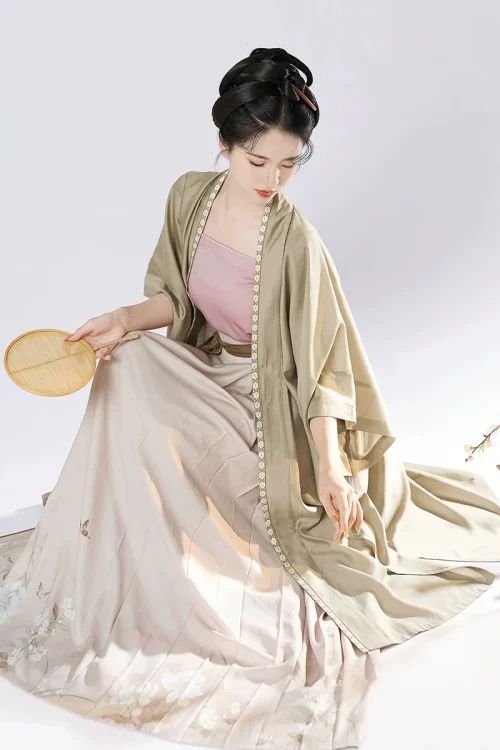
The Revival of the Water Wave Pattern in Modern Hanfu
In the 20th century, with the Hanfu revival movement, the water wave pattern experienced a resurgence in popularity. Designers and artisans began to reinterpret traditional motifs, including the water wave, bringing them into contemporary fashion while preserving their historical and cultural significance. The modern Hanfu movement aims to revive traditional Chinese clothing, and the water wave pattern has become one of the key elements symbolizing Chinese cultural heritage.
Today, the water wave pattern is often featured in modern adaptations of Hanfu, including fashion-forward interpretations that appeal to younger generations. Contemporary Hanfu designs may incorporate this classic motif into casual wear, formal attire, and even accessories, showcasing the enduring appeal of this ancient pattern.
Symbolism and Enduring Legacy
The water wave pattern on Hanfu carries deep symbolism that resonates across generations. Its connection to the element of water, a source of life, prosperity, and renewal, gives it a timeless relevance. The pattern represents not just the beauty of nature but also the philosophical concepts of balance, harmony, and interconnectedness in life. Through its continuous use and adaptation, the water wave pattern has become a visual link between China’s past and present, embodying the richness of Chinese art, fashion, and philosophy.
In summary, the intricate water wave pattern remains a cherished symbol in both traditional and modern Chinese clothing. Its historical evolution, from the ancient Han Dynasty through the Qing Dynasty, and its revival in the 21st century demonstrate its lasting cultural importance. The water wave pattern endures not only as an aesthetic element but also as a profound expression of Chinese identity, philosophy, and artistic excellence.
Water Wave Pattern has a long history in traditional Chinese garments’ evolution. You can have more understanding and learn more about patterns on Hanfu from our website:https://cheongsam.net/.
